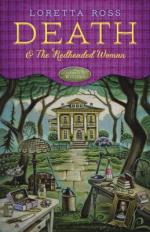- Audiobooks
- Books
- May We Suggest
- England
- United States history
- clergy
- rock music
- 1960s
- Alexander Hamilton
- Aaron Burr
- 18th century
- 19th century America
- founding fathers
- non-fiction
- dieting
- feminism
- advertising
- Cambridge
- auctioneers
- jewelry theft
- amateur dectectives
- Private Investigators
- 1960s music
- Chick Lit
- Comedy
- Historical Fiction
- History
- Mystery
May 3, 2016 | madame librarian
Sara Walker's DIETLAND is not for the faint hearted. It's a challenging read, thought provoking. Box office tickets to Lin-Manuel Miranda's "Hamilton" are sold out through January 2017; if you can't see the play, then read about the infamous Hamilton/Burr conflict. Fans of GRANTCHESTER, recently shown on local PBS Masterpiece Mystery, will want to read the James Runcie story collections featuring Canon Sidney Chambers and Inspector Geordie Keating.
"A fresh and provocative debut novel about a reclusive young woman saving up for weight loss surgery when she gets drawn into a shadowy feminist guerilla group called "Jennifer"--equal parts Bridget Jones's Diary and Fight Club"--.
When auctioneer Wren Morgan begins cataloging the contents of the Campbell mansion, she's unprepared to find something that can't be appraised--a dead man. After the body turns out to be a criminal with ties to a recent jewel heist, Wren comes face-to-face with Death Bogart. A private eye and part-time bounty hunter, Death is searching for the stolen jewels needed to convict a murderer. Death finds a friend and willing ally in Wren, but they aren't the only ones searching for treasure. Two ruthless men are also on the hunt, and they will do anything to eliminate the competition. To survive, Death and Wren must solve two mysteries spanning a century and a half and outwit a pair of cold-blooded killers. Praise: "Ross' thoroughly entertaining debut combines smart details about the auction business with two engaging mysteries and a uniformly appealing cast. Fans of small-town cozies, especially those by Denise Swanson, will love this, as will mystery readers who double as thrift-store aficionados and followers of auction reality shows.
1955. Canon Sidney Chambers, loveable priest and part-time detective, is back. Accompanied by his faithful Labrador, Dickens, and the increasingly exasperated Inspector Geordie Keating, Sidney is called to investigate the unexpected fall of a Cambridge don from the roof of King's College Chapel; a case of arson at a glamour photographer's studio and the poisoning of Zafar Ali, Grantchester's finest spin bowler. Alongside his sleuthing, Sidney has other problems. Can he decide between his dear friend, the glamorous socialite Amanda Kendall and Hildegard Staunton, the beguiling German widow? To make up his mind Sidney takes a trip abroad, only to find himself trapped in a web of international espionage just as the Berlin Wall is going up. .
In the summer of 1804, two of America's most eminent statesmen squared off, pistols raised, on a bluff along the Hudson River. That two such men would risk not only their lives but the stability of the young country they helped forge is almost beyond comprehension. Yet we know that it happened. The question is why. In War of Two , John Sedgwick explores the long-standing conflict between Founding Father Alexander Hamilton and Vice President Aaron Burr. A study in contrasts from birth, they had been compatriots, colleagues, and even friends. But above all they were rivals. Matching each other's ambition and skill as lawyers in New York, they later battled for power along political fault lines that would not only decide the future of the United States, but define it. A series of letters between Burr and Hamilton suggest the duel was fought over an unflattering comment made at a dinner party. But another letter, written by Hamilton the night before the event, provides critical insight into his true motivation. It was addressed to former Speaker of the House Theodore Sedgwick, a trusted friend of both men, and the author's own ancestor. John Sedgwick suggests that Hamilton saw Burr not merely as a personal rival but as a threat to the nation. Burr would prove that fear justified after Hamilton's death when, haunted by the legacy of his longtime adversary, he embarked on an imperial scheme to break the Union apart.
The pop world accelerated and broke through the sound barrier in 1966. In America, in London, in Amsterdam, in Paris, revolutionary ideas slow-cooking since the late '50s reached boiling point. In the worlds of pop, pop art, fashion and radical politics -- often fueled by perception-enhancing substances and literature -- the 'Sixties', as we have come to know them, hit their Modernist peak. A unique chemistry of ideas, substances, freedom of expression and dialogue across pop cultural continents created a landscape of immense and eventually shattering creativity. After 1966 nothing in the pop world would ever be the same. The 7 inch single outsold the long-player for the final time. It was the year in which the ever lasting and transient pop moment would burst forth in its most articulate, instinctive and radical way. Jon Savage's 1966 is a monument to the year that shaped the pop future of the balance of the century. Exploring canonical artists like The Beatles, The Byrds, Velvet Underground, The Who and The Kinks, 1966 also goes much deeper into the social and cultural heart of the decade through unique archival primary sources.





